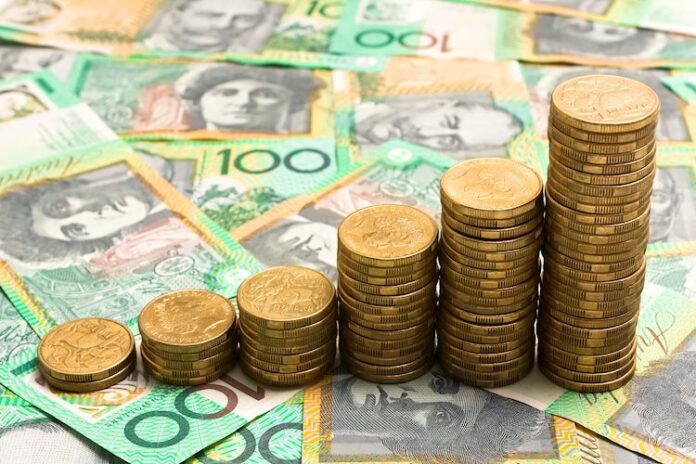- The AUD/USD declined on Tuesday to 0.6460.
- Market participants await inflation data amid renewed US-China trade war fears.
- Mixed local data, hawkish RBA and US Dollar strength influence AUD/USD sentiment.
The AUD/USD pair has been struggling to sustain its intraday gains, extending its losses for the second consecutive day and currently trading around 0.6460. Market participants will be closely monitoring inflation data due for release during Wednesday’s trading hours, with geopolitical concerns, particularly renewed US-China trade war fears, casting a shadow over the currency.
The AUD/USD pair faces an uncertain outlook influenced by the hawkish Reserve Bank of Australia (RBA) and mixed Australian economic data. The US Dollar’s strength has weighed on the pair, but potential rate hikes from the RBA may limit the downside.
Daily digest market movers: Australian Dollar pressured lower ahead of inflation data
- President-elect Donald Trump’s threatened tariffs fuel risk aversion, weakening the China-sensitive Australian Dollar.
- Australia’s inflation rate is forecast to climb to 2.3% YoY in October, up from 2.1% in September.
- The RBA’s next rate announcement on December 10 may be influenced by the inflation report which could stop the Aussie’s bleeding.
- On the other hand, the US Personal Consumption Expenditure Price Index on Wednesday will provide clues for Fed interest rate decisions and might also move the pair.
- On Thursday, November’s Federal Open Market Committee Minutes showed little insight.
- Federal Reserve officials had mixed views on further rate cuts but agreed not to signal future policy direction clearly.
AUD/USD technical outlook: Indicators lack momentum, but support at 0.6430 may hinder further downside.
The AUD/USD continues to struggle for momentum with technical indicators signaling further weakness. Both the Relative Strength Index (RSI) and Moving Average Convergence Divergence (MACD) remain in negative territory, suggesting that bears are in control. However, the currency pair has found support at 0.6430, which could potentially halt the decline. On the upside, a break above 0.6450 could trigger a recovery.
Australian Dollar FAQs
One of the most significant factors for the Australian Dollar (AUD) is the level of interest rates set by the Reserve Bank of Australia (RBA). Because Australia is a resource-rich country another key driver is the price of its biggest export, Iron Ore. The health of the Chinese economy, its largest trading partner, is a factor, as well as inflation in Australia, its growth rate and Trade Balance. Market sentiment – whether investors are taking on more risky assets (risk-on) or seeking safe-havens (risk-off) – is also a factor, with risk-on positive for AUD.
The Reserve Bank of Australia (RBA) influences the Australian Dollar (AUD) by setting the level of interest rates that Australian banks can lend to each other. This influences the level of interest rates in the economy as a whole. The main goal of the RBA is to maintain a stable inflation rate of 2-3% by adjusting interest rates up or down. Relatively high interest rates compared to other major central banks support the AUD, and the opposite for relatively low. The RBA can also use quantitative easing and tightening to influence credit conditions, with the former AUD-negative and the latter AUD-positive.
China is Australia’s largest trading partner so the health of the Chinese economy is a major influence on the value of the Australian Dollar (AUD). When the Chinese economy is doing well it purchases more raw materials, goods and services from Australia, lifting demand for the AUD, and pushing up its value. The opposite is the case when the Chinese economy is not growing as fast as expected. Positive or negative surprises in Chinese growth data, therefore, often have a direct impact on the Australian Dollar and its pairs.
Iron Ore is Australia’s largest export, accounting for $118 billion a year according to data from 2021, with China as its primary destination. The price of Iron Ore, therefore, can be a driver of the Australian Dollar. Generally, if the price of Iron Ore rises, AUD also goes up, as aggregate demand for the currency increases. The opposite is the case if the price of Iron Ore falls. Higher Iron Ore prices also tend to result in a greater likelihood of a positive Trade Balance for Australia, which is also positive of the AUD.
The Trade Balance, which is the difference between what a country earns from its exports versus what it pays for its imports, is another factor that can influence the value of the Australian Dollar. If Australia produces highly sought after exports, then its currency will gain in value purely from the surplus demand created from foreign buyers seeking to purchase its exports versus what it spends to purchase imports. Therefore, a positive net Trade Balance strengthens the AUD, with the opposite effect if the Trade Balance is negative.

